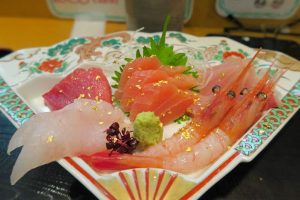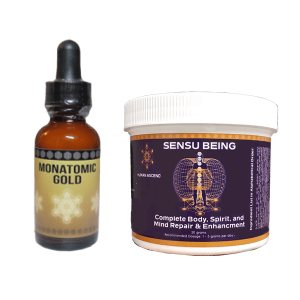
The use of gold as an edible decoration on fancy desserts is an unusual trend, but it is interesting to think of it in the context of ingesting elements. Can edible gold be another way to get the positive effects of this precious material?
It can’t, and there are many reasons why edible gold can’t replace Monatomic Gold. Just because the element is edible doesn’t mean it will have the same effects on your body!
Edible Gold Isn’t As Pure As Monatomic Gold
In its purest state, gold is very soft and, more importantly, inert. This is how edible gold, which is often referred to in the food industry as “gold leaf,” is safe to use for food decorating. This product comes as thin strips or sheets of 24-karat gold mixed with another metal. Mixing gold with other alloys creates new levels of hardness so that the leaf can take on the form of the food it’s decorating.
Most gold leaf is a mixture of gold and another edible element like silver, meaning the final product is not “pure” gold. Even with the filler, edible gold has no taste, calories, or texture. However, a non-edible gold leaf used for ornamentation like gilding contains metals that can be toxic in very high doses.
Monatomic Gold is pure, in that the only element you’ll find in a quality supplement is gold. While it comes in a filler material (we use ionized water), this material is inert and does not affect how the body processes the gold molecules!
The “Biggest” Difference Between Monatomic And Edible Gold: The Molecular Structure
The size and state of the gold molecules are what separate Monatomic Gold from edible gold. The edible gold you find on desserts is not a bioavailable form of gold; this means that the body can’t use the element after it’s ingested. Gold, in its most common form, is chemically inert. It can pass right through the human digestive system without the body absorbing any part of it.
For gold to work as a supplement, the element must go through a special alchemical process. This breaks down the bonds between atoms, leaving them as single molecules that are small enough to be of use to the body’s cells. Much like how gold leaf coats a pricey dessert, Monatomic Gold coats the DNA and other molecular structures; in the case of the latter, though, the coating does some good for your body!
Monatomic Gold Is Much More Convenient
Setting aside purity and bioavailability, it doesn’t make sense to consume edible gold: the purest gold leaf can cost anywhere between $120 and $160 per gram! This is an exorbitant cost that might justify the high prices on luxury items like gold-encrusted hamburgers, pizza, or chicken wings, but it won’t help your body, mind, or spirit. Because gold is tasteless, it won’t help the food, either. Gold in a monatomic form (after it’s put through the alchemical process, it looks like white powder) is known to help your body, mind, and spirit! It’s a powerful electrical conductor that users take to help renew their physical and mental energies. Balancing and calming, Monatomic Gold comes in a form your body will actively use!

